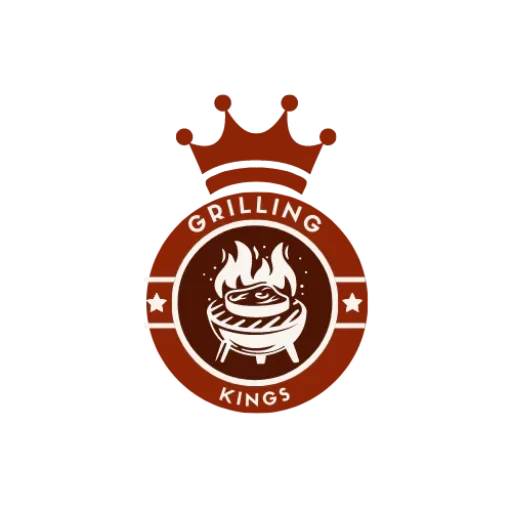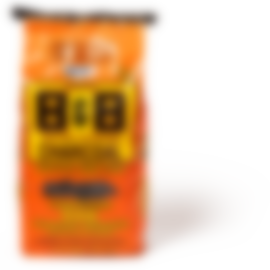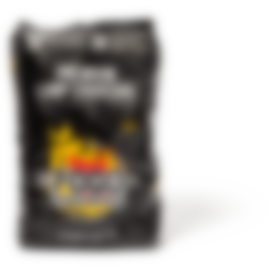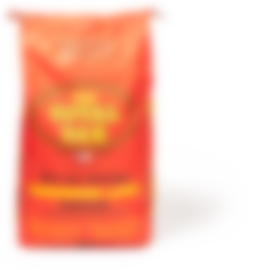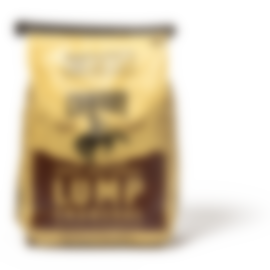As an Amazon Associate I earn from qualifying purchases.
History of Charcoal
Charcoal in the Iron Age
Way back in the Iron Age, people found out that charcoal is a better fuel than wood. It burns hotter and lasts longer, which made it perfect for their needs. They used it to heat up their forges and create iron tools and weapons. Neat, huh?
Charcoal in Ancient Civilizations
Charcoal was popular not just in the Iron Age, but also in ancient civilizations like Egypt and Greece. They used it for cooking, heating, and even for making art! Some of the stunning black drawings on ancient pottery were made using charcoal. Imagine that!
Charcoal Production Throughout History
So how is charcoal made? It’s actually pretty simple. You take wood or sawdust and heat it up really high, with very little oxygen. This process is known as “carbonization” and it turns the wood into the black, lightweight stuff we call charcoal.
These days, charcoal is usually made from wood, either lump hardwood or briquettes. Both types come from the lumber industry. That big blue bag you’ve probably seen at the store? That’s a popular brand of charcoal briquettes!
Did you know that Kingsford Original Briquettes burn the longest and hottest? It’s true! You can thank those clever folks who tested them out along with four other popular US brands.
So there you have it! A bit of history about how charcoal has been used and made throughout the ages. Next time you fire up the grill, you’ll know you’re part of a long tradition!
Lump Charcoal vs. Charcoal Briquettes
Differences in composition
Lump charcoal and charcoal briquettes may seem similar, but they’re actually quite different! Lump charcoal is made from pure, natural hardwood, while briquettes are made up of wood scraps, sawdust, and other materials combined with a binding agent.
Production process variations
The way lump charcoal and briquettes are made is different too. Lump charcoal is made by heating wood in a low-oxygen environment, allowing it to become charred but not burnt. This lets the charcoal burn hotter and longer than regular wood. On the other hand, charcoal briquettes are made by compressing the wood scraps and sawdust, then heating them to create a more uniform and easy-to-use product.
Physical characteristics
When you look at lump charcoal and briquettes, you’ll see some differences right away. Lump charcoal is usually large and irregularly shaped, while briquettes are smaller, more uniform, and have a distinctive pillow shape. These shapes affect how the charcoal burns – lump charcoal burns hotter and faster, while briquettes burn more evenly and consistently.
Price comparison
In general, lump charcoal is a bit more expensive than briquettes. This is because it’s made from higher-quality wood and has fewer additives. However, the price difference isn’t too big, and many people think the better performance of lump charcoal is worth the extra cost.
So, next time you’re planning a cookout, think about whether you want to use lump charcoal or briquettes. Each type has its pros and cons, but both will help you create a fantastic BBQ meal!
Lump Charcoal
Materials used for lump charcoal
Lump charcoal is made from wood, like logs and branches. It’s a natural product, so you’re getting the real deal when using it. It’s the OG of the charcoal world!
Production process
To make lump charcoal, wood is heated at high temperatures, without much oxygen. This helps it turn into the charcoal you use for a barbecue. Sounds cool, huh?
Advantages of using lump charcoal
One great thing about lump charcoal is that it heats up quickly! No more waiting around for the grill to get hot. Plus, it gives your food a delicious, smoky taste – yum! It also burns hotter than briquettes, so your food will cook faster. And let’s not forget, you can control the heat by moving the lumps around on your grill – total boss move!
Disadvantages of using lump charcoal
There are a couple of not-so-great things about lump charcoal, though. One thing is that the heat can be a little inconsistent since the lumps are different sizes and shapes. Also, it doesn’t burn as long as briquettes, so you might need to add more during a cookout. Oh, and it’s usually a bit more expensive – bummer!
Varieties of lump charcoal
There are loads of different kinds of lump charcoal to choose from, depending on the type of wood used, like oak, hickory, or even coconut shells. It might take some time to find your fave, but hey, that just means more barbecue fun! So go ahead and start experimenting with lump charcoal, and get grilling!
Charcoal Briquettes
Ingredients in Charcoal Briquettes
Charcoal briquettes are made of a few different things. They’re a mix of charcoal, wood, and other materials like sawdust, starch, and sometimes, even coal. They’re then shaped into small, pillow-like chunks that are super easy to handle. The whole thing is held together by a binder like a tight group of friends!
Manufacturing Process of Briquettes
The process to make charcoal briquettes is pretty cool! First, wood and other materials are heated at high temperatures with little oxygen, kind of like baking a cake with no air. This process helps create charcoal. Next, the materials are mixed together, and the binder is added. Finally, they’re shaped into those small chunks you see in the store. They’re like tiny pillows of fun for your grill!
Advantages of Using Charcoal Briquettes
Using charcoal briquettes has its perks. They’re easy to light, and they hold their heat for a long time – perfect for grilling up those tasty burgers. Plus, they’re relatively cheap to buy, so you won’t break the bank! Big brands like Kingsford Original Briquettes are known for their long cooking time and extra heat.
Disadvantages of Using Charcoal Briquettes
Of course, there are some downsides to using charcoal briquettes too. They can be slower to light, and they may leave a more intense smoky flavor on your food. Some people love that smoky taste, while others prefer a cleaner flavor.
Types of Charcoal Briquettes
There are many types of charcoal briquettes out there, like the “big blue bag”, a super popular brand that has a 62-cent grip on the US charcoal market. So next time you’re planning a barbecue, take a moment to think about what type of charcoal is best for your needs. Happy grilling!
Selecting the Best Charcoal
Now that you know a bit about charcoal, you might wonder how to pick the best one. Don’t worry! We’re here to help. Just follow these simple steps, and you’ll be grilling like a pro in no time.
Factors to consider when choosing charcoal
- Heat: Think about how hot you want your fire to be. Lump charcoal usually burns hotter than briquettes, so it’s great for searing steaks. Briquettes, on the other hand, provide a steadier heat and are better for slow-cooking.
- Cooking Time: Do you plan to barbecue all afternoon? Better grab some briquettes, as they last longer than lump charcoal.
- Usability: Briquettes tend to be easier to light and manage, making them a good choice for beginners. If you’re an experienced griller, you might enjoy the challenge of working with lump charcoal.
Evaluating quality
To find high-quality charcoal, give the bag a little squeeze. You should feel lots of big pieces (like the size of a golf ball or bigger). Smaller bits can be a sign that the charcoal might have been damaged or isn’t the best quality.
Recommended brands
If you’re looking for top-notch charcoal, try the “big blue bag” – it’s the most popular brand in the US and known for providing intense heat and long cooking times. You might also like Kingsford Original Briquettes for their exceptional performance.
Eco-friendly alternatives
If you want to go green, try using sustainable charcoals made from coconut shells, bamboo, or even waste materials like sawdust. These options can be found in specialty stores and are just as good for grilling while being better for the environment. Happy grilling!
How to Light Charcoal
Gearing up for a BBQ? Let’s help you get your charcoal started. There are three main ways to light charcoal: using a chimney starter, an electric starter, or lighter fluid. Whichever method you pick, safety is key! Here are some tips and tricks to make your BBQ a hit.
Chimney starter method
A chimney starter is a nifty contraption to light charcoal without a hitch. Just follow these steps:
- Stuff crumpled newspaper in the bottom section of the chimney.
- Fill the top part with your lump charcoal or briquettes.
- Set the chimney on the grill grate and light the newspaper.
- Wait for about 15-20 minutes until the coals get hot and covered with ash. Then, carefully dump them into the grill.
Electric starter method
An electric starter is another option, without the need for lighter fluid or newspaper. Here’s how:
- Pile up your charcoal in your grill.
- Push the electric starter into the middle of the charcoal mound.
- Turn on the electric starter and wait until the coals are red and covered with ash.
- Pull out the starter and rearrange the coals with long tongs.
Using lighter fluid
One more method is using lighter fluid, but be cautious and follow these steps:
- Make a pyramid with your charcoal in the grill.
- Sprinkle lighter fluid evenly on the charcoal, using the recommended amount.
- Light the charcoal (you might see a small flare-up).
- Wait until the charcoal is hot and ashy before spreading it for cooking.
Safety tips for lighting charcoal
Lastly, always remember these safety tips:
- Never use gasoline or any other non-approved accelerant.
- Keep kids and pets away from the grill.
- Never add lighter fluid to already ignited charcoal.
- Use long heat-resistant gloves and tools to prevent burns.
Now that you’ve mastered lighting charcoal, have a blast grilling up your tasty treats!
Cooking with Charcoal
Grilling Techniques
When you cook with charcoal, it’s like a party in your backyard! You can choose between two types of charcoal: lump charcoal and charcoal briquettes. Lump charcoal is made from hardwood, while briquettes are made from sawdust. Both are great, so just pick your favorite.
Temperature Control
Imagine you’re an orchestra conductor, and the heat is your music. You need to control the temperature to cook your food perfectly. Lump charcoal is like jazz, giving you hotter and faster heat. Charcoal briquettes are like a slow symphony, burning for a longer time and providing consistent heat. The most popular brand is the “big blue bag,” which is really called Kingsford Original Briquettes. They’ll give you the longest cooking time and most intense heat.
Heating Evenness
You don’t want your food to be burned on one side and raw on the other, right? Well, that’s where heating evenness comes into play. Both lump charcoal and briquettes can provide even heat, but it’s important to spread them out evenly in your grill. That way, every bite of your delicious meal will be cooked just right!
Cooking Times
Just like we all have different personalities, different types of charcoal need different cooking times. Lump charcoal is like a sprinter, providing faster heat but burning out sooner. Charcoal briquettes are like a long-distance runner, taking more time to heat up but lasting longer. So, pick your teammate based on how much time you want to spend grilling and enjoy your cookout!
Charcoal Storage and Maintenance
Proper charcoal storage
So, you’ve got yourself a big blue bag of charcoal, and you’re ready to fire up the grill. But wait! Before you start cookin’ up a storm, it’s important to store your charcoal the right way. Keep it in a cool and dry place, like a garage or a shed. Oh, and don’t forget to seal the bag tightly after each use to keep out any pesky moisture.
Keeping charcoal dry
You know how a wet match won’t light up? Well, the same goes for charcoal! If it gets damp or wet, it won’t burn properly, which means bad news for your BBQ. So, make sure your charcoal stays as dry as a bone. Pro tip: if you’re storing charcoal in a humid area, toss in a few silica gel packets (yep, those little things you find in new shoes) into the bag to help keep moisture at bay.
Maximizing charcoal lifespan
Now, wouldn’t it be a bummer if you went to grill up some juicy burgers only to find your charcoal’s gone stale? Fear not, because there’s a way to give your charcoal a longer lease on life. Just remember the golden rule: the less oxygen, the better! So, tightly shut your charcoal bag, and if you want to go the extra mile, store it in an airtight container.
By following these simple tips, your charcoal will be ready to go whenever you’re craving a mouthwatering BBQ!
Pros and Cons of Charcoal vs. Gas Grilling
Flavor Differences
When it comes to flavor, charcoal grilling has the upper hand! The savory, smoky taste you love comes from the combination of wood and fire. Gas grills just can’t match that authentic cookout flavor. So if taste is a top priority, charcoal’s your buddy.
Cost Comparison
On the money side, charcoal grills are often cheaper than gas grills. But, don’t forget to factor in the cost of fuel! Charcoal might cost more per cookout than propane or natural gas. So, while you may save on the grill itself, you could end up spending more on fuel in the long run.
Ease of Use
Gas grills win when it comes to ease of use. They heat up quickly and you can control the temperature with a turn of a knob. Charcoal grills take longer to fire up, and adjusting the heat isn’t as simple. If you’re in a hurry or grillin’ and chillin’ is more your speed, gas may be the way to go.
Environmental Impact
Finally, let’s talk about our planet! Gas grills have a smaller carbon footprint than charcoal grills. This means they’re a bit more Earth-friendly. Charcoal grills release more carbon dioxide into the atmosphere, which isn’t great for the environment. So, if being eco-conscious is important to you, gas grilling might be a better fit.
In the end, both types of grilling have pros and cons. It’s up to you to decide which one suits your taste buds, wallet, and planet-loving heart!
Frequently Asked Questions
Can I reuse charcoal?
Absolutely! You can totally reuse charcoal. If you find unburned charcoal in your grill, simply shake off the ash, and you’re good to go! You can keep using it until it’s all burned up. Pretty cool, huh?
Do lump charcoal and briquettes expire?
No way, Jose! Charcoal doesn’t really expire. As long as you keep it in a dry place, it will last a long time. Just make sure it doesn’t get wet or damp, or else it won’t light up properly.
Is there a taste difference between lump and briquette?
Well, some folks say there’s a taste difference, but others don’t notice it. Lump charcoal is made from pure wood, so it might give your food a slightly smokier flavor. Briquettes, on the other hand, have some extra ingredients, but most brands make them taste pretty neutral. It’s up to you and your taste buds!
Which is more environmentally friendly?
Lump charcoal is generally considered more eco-friendly since it’s made from just wood. Briquettes have added stuff like binders and fillers, which aren’t as great for Mother Earth. So, if you want to be a little greener, go for lump charcoal.
Can I use charcoal indoors?
Hold your horses! Using charcoal indoors is a big no-no. Burning it produces carbon monoxide, which is super dangerous in enclosed spaces. So, always use charcoal in a well-ventilated, outdoor area. Stay safe and happy grilling!
Amazon and the Amazon logo are trademarks of Amazon.com, Inc, or its affiliates.
